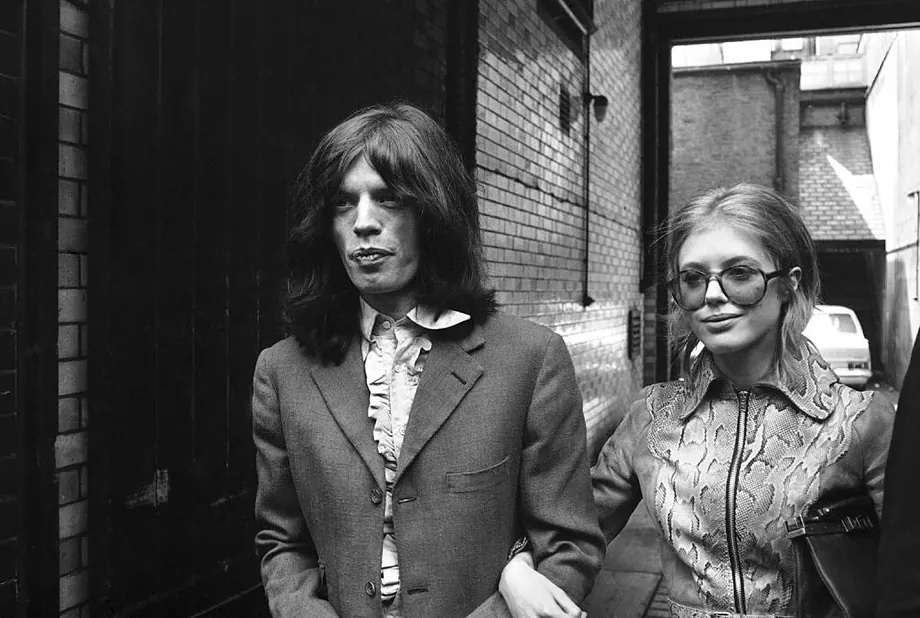There is an idea that explains Marianne Faithfull's role in the history of 20th-century culture: Faithfull, the daughter of two dilettantes who were at the forefront of the 1930s, was the woman who connected 1960s pop music with the literary tradition of romanticism from the 18th and 19th centuries. She walks in beauty, her latest album, was filled with verses from Shelley, Keats, Byron, and company, exposing that hypothesis. But long before that, the singer's youth (recently deceased at the age of 78), the years she spent between 1964 and 1970, were a kind of vital romantic performance, from the sublime to the sordid.
And to this staging, the world called it "being Mick Jagger's muse," which is a phrase that, heard in 2025, sounds a bit uncomfortable. Faithfull was by no means a passive muse: she sang, wrote, and fueled ideas for/the Rolling Stones. She told Mick Jagger to read The Master and Margarita by Bulgakov, led him to dress like a vampire from John Polidori, and introduced him to French poetry. And yes: she was also the woman for whom Jagger left his first wife, whom he checked into a clinic after overdosing on barbiturates, and the one Jagger abandoned after another failed suicide attempt.
The events narrated in Faithfull's 1994 autobiography (there is a Spanish edition by the Celeste label) are complex. In 1964, Faithfull was 17 years old, attending high school, and met the manager of the Rolling Stones, Andrew Loog Oldham, at a party. Oldham liked her appearance, hired her to record a song, and arranged for her As Tears Go By, the first song written by Mick Jagger and Keith Richard. In August of that year, her version entered the UK charts, and Faithfull, still a minor, became a character in the Rolling Stones' landscape.
Initially, her friend in the band was not Jagger; Brian Jones and Keith Richards, along with his friend/lover Anita Pallenberg, were the people who accompanied her into their world. Pallenberg, according to Faithfull, was the person who introduced her to acid, cannabis, and heroin. Richards was the man she fell in love with. And Jones was the personality she recognized, the most fragile and sensitive Rolling Stone.
Faithfull first partnered with Jean de Breiteuil, a drug dealer specializing in celebrities, but she married a gallery owner from her parents' world, John Dunbar, and had a son named Nicholas with him. She slept with Keith Richards once, and only then did Mick Jagger's obsessive interest awaken, who at that time was also married to a woman just slightly older than Faithfull. Chrissie Shrimpton, in 1966, was 21 years old and left alone in a mansion called Harley House, while Jagger lived the life of a Rolling Stone. She attempted suicide on December 15 but survived. During her recovery, Jagger packed her things into a truck and sent them to her father-in-law's house. Faithfull moved into Harley House before the year ended.
What was Marianne like in 1967? Her career had already taken off, although her voice still sounded clear and somewhat childish, not the raspy voice she returned to the world with in 1979. In 1965, she released two simultaneous albums, one of pop and one of folk, with new releases in 1965 and 1966. However, her image, which in 1964 embodied innocence and the most innocent beauty, had already changed in the public eye. In 1967, she was caught up in a raid at Keith Richards' house in Sussex. The police raided a party, found a significant amount of drugs, and arrested those present. Faithfull was surprised by the police's appearance while she was taking a bath. The officers urged her to come down to the living room, and she only found a rug to cover herself. The image leaked, and the tabloids turned her into the venus in furs of an unbearably scandalous world.
They were partly right: Faithfull faced three years of downhill with Jagger. When she moved into Harley House, she was already taking 10 Mandrax pills to sleep. In 1968, she starred in The Girl on a Motorcycle with Alain Delon, and her image was still luminous. But in 1969, Brian Jones died, and the blow was devastating for her former friend. Not only was the musician's death traumatic: Jagger's coldness towards that death was the moment when Faithfull sensed that she was living with an aspiring vampire to whom she had filled with horror stories. At that time, Jagger already had a lover, singular, whom he preferred over Faithfull: Marsha Hunt. Faithfull was no longer a porcelain beauty; she was a cadaverous drug user.
There was a trip to Australia, the filming of a movie that brought the couple together in Sydney. Faithfull flew with a suitcase full of medications. Tuinal, the main component of her diet in those days, was a mixture of barbiturates and sodium salts. Upon arriving at the hotel, Jagger went to sleep. Faithfull faced her ghostly image in the mirror and wanted to jump out the window. She couldn't open the window. She then took 30 Tuinal pills. She woke up six days later. By May 1970, Jagger had already broken up with her, and a court had taken away custody of her son. She was left with a heroin addiction. She was the monster of a gothic tale that would only be complete with her artistic rebirth in 1979. The ghost had returned, bringing the secret of beauty with her.
